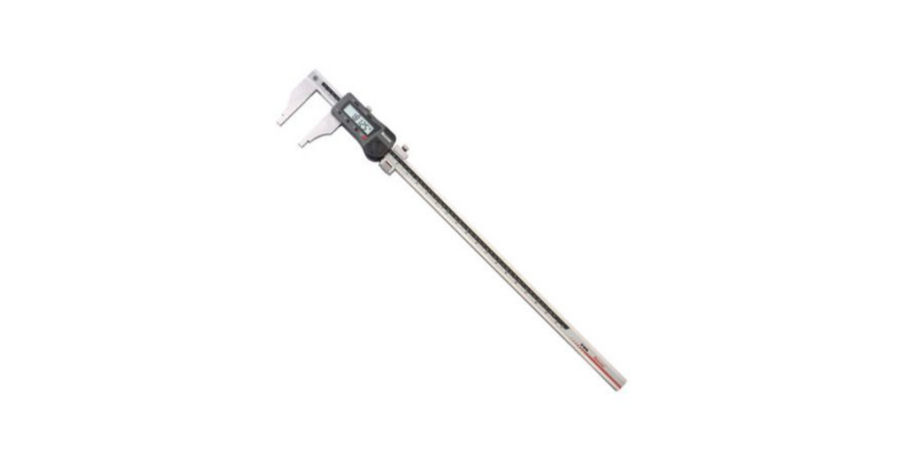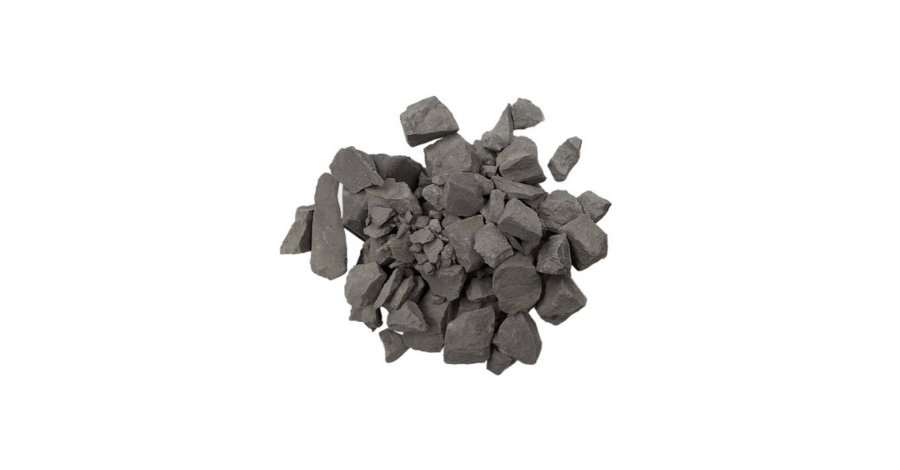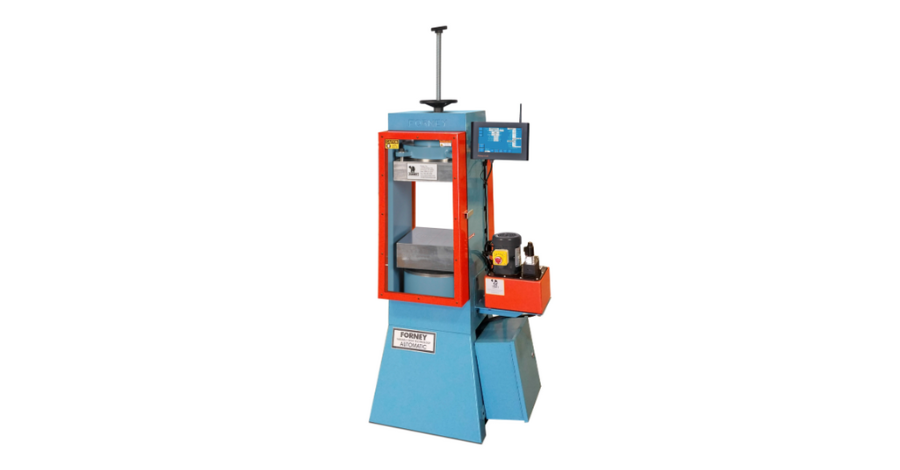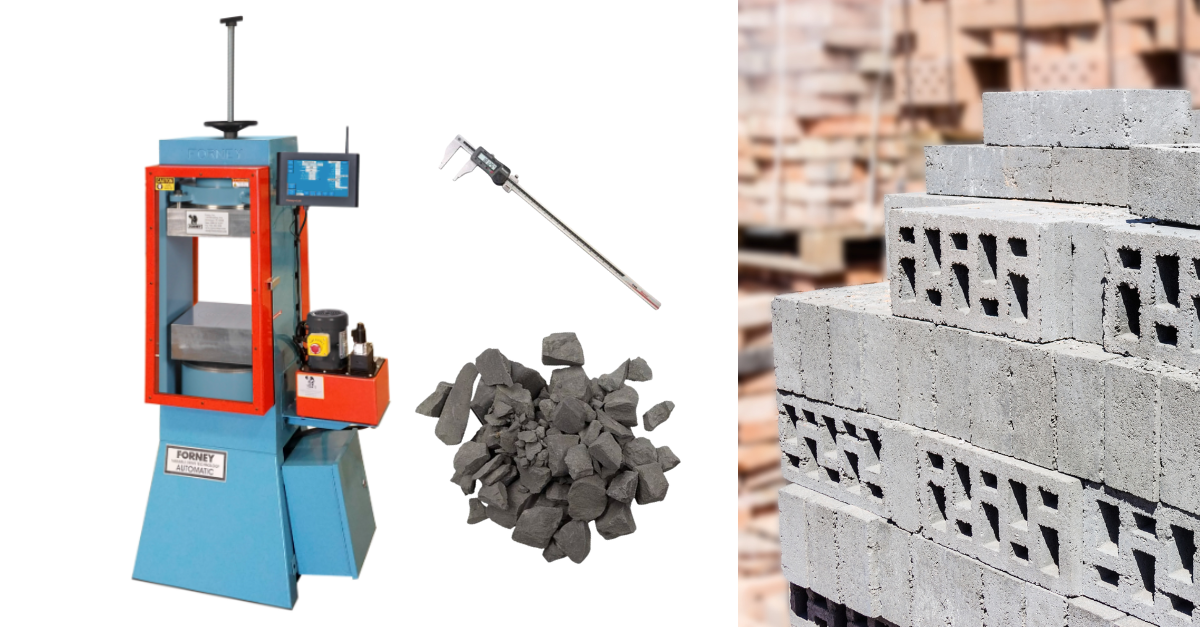Masonry is a type of construction material that’s commonly used in load-bearing walls and foundations. To verify that the masonry materials meet the specified compressive strength in these critical applications, they need to be tested according to ASTM C1314.
Masonry materials in construction — like bricks and concrete blocks – play an important role in the long-term durability and strength of a structure. To verify this strength, you need to construct masonry prisms.
A masonry prism is a small, representative assembly of masonry units used in a wall or structure. Testers can either construct masonry prisms based on the same specifications of the material used in construction, or they can evaluate in-place masonry construction by removing prisms from the field in accordance with ASTM C1532.
Related: ASTM C140: Sampling & Testing Concrete Masonry Units
In this simple guide, we cover the basics of ASTM C1314:
- What ASTM C1314 includes
- Recommended equipment for ASTM C1314
- Test procedure
- Calculations & reporting
What does ASTM C1314 include?
ASTM C1314 provides guidelines for constructing and testing masonry prisms to determine their compressive strength. This standard ensures that masonry materials meet the strength requirements for construction projects.
In addition to guidelines for testing the compressive strength of masonry prisms, ASTM C1314 also includes how to construct a set of prisms. If you’re testing field-removed specimens acquired according to ASTM C1532, then you would construct prisms according to ASTM C1587.
Masonry prisms can be constructed as:
- Solid unit prism
- Hollow unit prism
- Grouted hollow unit prism
- Hollow unit reduced by saw cutting
- Grouted hollow unit reduced by saw cutting
- Grouted multi-wythe prism
Always follow project specifications or code requirements to select the correct prism type. Remember, the masonry prism you construct must be representative of the masonry used in construction.
Related: Simple Guide to Sampling & Testing Grout for Masonry (ASTM C1019)
ASTM C1314 also includes instructions for curing constructed masonry prisms and storing field-removed prisms. It’s important that visible moisture isn’t present on the surface of the prisms at the time of testing and that the prisms aren’t over-dried at any time.
Once constructed and cured to the specified age, the masonry prisms are ready to test. Here’s what you will need.
Recommended Equipment for ASTM C1314
A caliper to measure the length and width at the edges of the top and bottom faces of the prisms, and the height at the center of each face.

A capping plate, capping wear plate, and/or casting plate for capping masonry prisms according to ASTM C1552. You will also need capping compound, either sulfur capping materials or high strength gypsum cement capping materials.

A block tester compression test machine with a spherically seated, hardened metal block for the upper platen. While a hardened metal bearing plate is not required for underneath the specimen, it can help minimize wear of the machine’s lower platen.

A compression testing machine determines the masonry prism’s strength and deformation behavior under compressive (pressing) load.
Testing the compressive strength of masonry requires reliable measurements and calculations – and a consistent test at the machine for each specimen in the set. That’s why many testers are using Connected Compression Machines, which include automatic controls and integrated testing software.
Connected machines provide pre-test “Smart Checks” to validate test parameters and measurements and run automatic preload calculations. During the test, the machine automatically controls the rate. After, calculations and values transfer to your LIMS or other software of choice.
Finally, a single steel bearing plate might be needed if the bearing area of the upper or lower platen is not sufficient to cover the masonry prism’s area.
The requirements for the testing machine load frame, plates, blocks, and platens are all defined by ASTM C1716. Testing large masonry specimens and prisms requires relatively thick steel blocks, which require relatively large machines to accommodate them along with the prisms.
With this equipment, you’re ready to conduct a compressive strength test according to ASTM C1314.
Masonry Prism Compressive Strength Test Procedure & Results
- Take measurements of each masonry prism specimen to calculate the net cross-sectional area and height to thickness ratio.
- Prepare the test machine with an accuracy within ±1.0% of the expected load range.
- Position the specimen on the lower platen or bearing plate and align it with the machine’s center of thrust.
- Lower the upper platen onto the specimen and rotate it by hand to ensure it is seated evenly.
- Apply the initial load up to half the expected total load for constructed prisms. For field-removed prisms, go up to a quarter of the expected total load.
- Apply the remaining load evenly over 1 to 2 minutes for constructed prisms and 2 to 4 minutes for field-removed masonry prisms.
- Continue loading at a uniform rate until the failure mode is clearly identified.
- Record the highest load applied during the test.
- Observe and document failure by describing the failure mode, including crack patterns or spalling.
- Calculate each masonry prism’s strength by dividing the maximum compressive load by the net cross-sectional area.
- Calculate the compressive strength of masonry by multiplying the prism strength by the height to thickness ratio correction factor for each specimen. Then, take the average of every prism in the set for the final compressive strength value.
In addition to strength calculations, ASTM C1314 requires testers to report additional details about the specimen:
- Name(s) of the parties responsible for prism construction, transport, and testing
- Prism dimensions, including width, height and length
- Mortar type used
- Grout used
- Type of masonry unit used
- Age of the prism at the time of the test
- Maximum/minimum temperature the prism experienced within 48 hours of construction & grouting
- Maximum compressive load sustained by each prism
- Net cross-sectional area of each prism
- Method used to calculate the cross-sectional area
- Diameter of the spherical head
- Thickness of the upper and lower bearing plates
For prisms taken from field-removed masonry specimens, additional reporting details include:
- Name of the party conducting the testing
- Name(s) of parties responsible for prism removal, transport and testing
- Condition of the specimen before testing, with a detailed description
- Photographs of the specimen before testing
With a Connected machine, ASTM C1314 results are automatically calculated and compiled into the appropriate reports, saving you time and ensuring high quality results.
Conclusion
ASTM C1314 ensures material testers follow standard test methods for compressive strength testing of masonry prisms. While this simple guide includes everything you need to get started, please review the current ASTM standard for the most up-to-date regulations.
Forney has the machines, accessories, and software necessary for ASTM C1314. Shop the Forney store today or find your machine.
